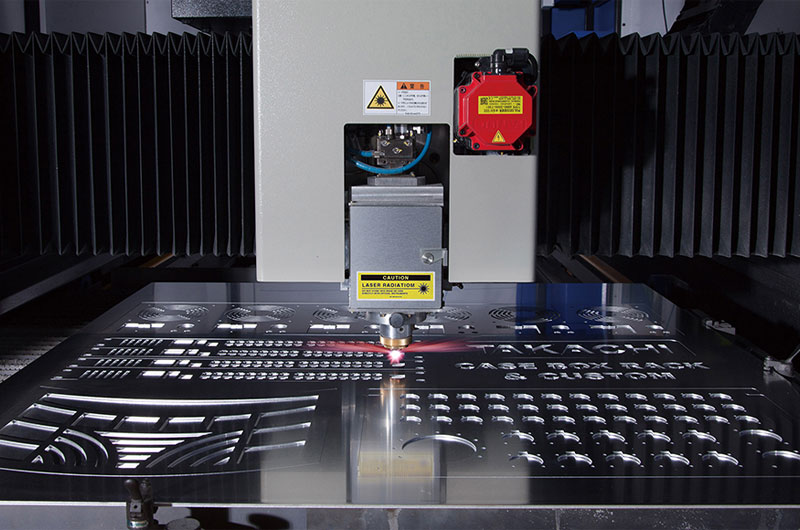In today’s electronics-driven world, the demand for high-quality, durable, and precision-engineered electronic enclosures is higher than ever. Whether it’s for protecting circuit boards, controlling thermal output, or shielding sensitive components from electromagnetic interference, sheet metal enclosures play a critical role.
At the heart of their manufacturing lies one key process: sheet metal cutting.
Today, we will explore the importance of sheet metal cutting in producing electronic enclosures, the techniques involved, material considerations, and best practices for ensuring accuracy, efficiency, and product integrity.
Why Sheet Metal Cutting is Crucial for Electronic Enclosures
Electronic enclosures must meet strict performance, aesthetic, and dimensional requirements. Precision in cutting directly affects:
- Component fit and alignment
- Structural integrity
- Thermal management and airflow design
- EMI/RFI shielding
- Mounting and access points for connectors, displays, and buttons
Poorly cut enclosures can lead to functional failures, heat buildup, short circuits, or customer dissatisfaction.
Common Sheet Metals Used for Electronic Enclosures
Before choosing a cutting method, it’s essential to understand the materials typically used for enclosures:
| Material | Features |
|---|---|
| Aluminum | Lightweight, corrosion-resistant, excellent thermal/electrical conductivity |
| Stainless Steel | Strong, corrosion-resistant, ideal for rugged or outdoor applications |
| Cold Rolled Steel (CRS) | Cost-effective, easy to cut and form, good for indoor electronics |
| Copper | Superior electrical conductivity, used for shielding and heat dissipation |
Each material has different properties that affect cutting behavior, such as hardness, thickness, and melting point.
Sheet Metal Cutting Techniques for Enclosures
1. Laser Cutting
Laser cutting is one of the most precise methods for cutting electronic enclosure panels. A focused beam of light melts or vaporizes the material with minimal kerf width and high edge quality.
- Best for: Aluminum, stainless steel, and thin copper sheets
- Advantages: Tight tolerances, clean edges, fast turnaround
- Applications: Cutouts for switches, screens, vents, USB ports
2. Waterjet Cutting
This method uses a high-pressure stream of water (with or without abrasives) to cut metal without heat.
- Best for: Sensitive materials, thick sheets, or multi-layer panels
- Advantages: No thermal distortion, excellent for prototyping
- Applications: Enclosures requiring high dimensional accuracy or special composites
3. Plasma Cutting
Plasma cutting involves a fast-moving stream of ionized gas (plasma) to cut through electrically conductive metals.
- Best for: Thicker steel enclosures
- Advantages: High-speed cutting, lower cost than laser for heavy-duty parts
- Applications: Industrial enclosures, power distribution units
4. Punching (Turret or CNC Punch Press)
Punching uses a die to stamp out specific shapes.
- Best for: High-volume production of standard enclosures
- Advantages: Economical for repeatable shapes (vents, mounting holes)
- Applications: Server chassis, telecom enclosures, battery casings
Design Considerations for Cut Electronic Enclosures
To optimize for both function and manufacturability, consider the following during the design phase:
- Hole and cutout placement: Ensure clearances for ports, connectors, and heat sinks.
- Bend allowances: Account for material thickness and bend radius to avoid warping cut edges.
- Tolerance stack-up: Maintain realistic tolerances based on cutting method and material.
- Deburring needs: Smooth cut edges may require post-processing for user safety.
- Ventilation and EMI: Strategically placed cutouts can aid heat dissipation and EMI control.
Benefits of Precision Cutting for Enclosure Manufacturers
Precision cutting offers metal enclosure manufacturers enhanced accuracy, reduced material waste, faster production, consistent quality, and compatibility with complex designs, ensuring cost-effective and high-performance enclosures.
- Reduced waste: Tight tolerances reduce scrap and rework costs.
- Faster assembly: Accurately cut parts fit seamlessly during assembly.
- Enhanced product durability: Clean, burr-free edges reduce long-term wear and corrosion risks.
- Customization flexibility: Easily accommodate product variations or customer-specific layouts.
Choosing a Sheet Metal Cutting Partner for Enclosures
When outsourcing cutting for your enclosures, look for a partner with:
- Advanced cutting technology (laser, CNC, waterjet, etc.)
- Material expertise across metals like aluminum, stainless steel, and copper
- Tight quality control systems (e.g., ISO 9001, IPC standards)
- Prototyping to production scalability
- In-house finishing and forming capabilities
A knowledgeable partner helps ensure the final enclosure is not just cut to spec, but also functional, durable, and aesthetically aligned with your product vision.

